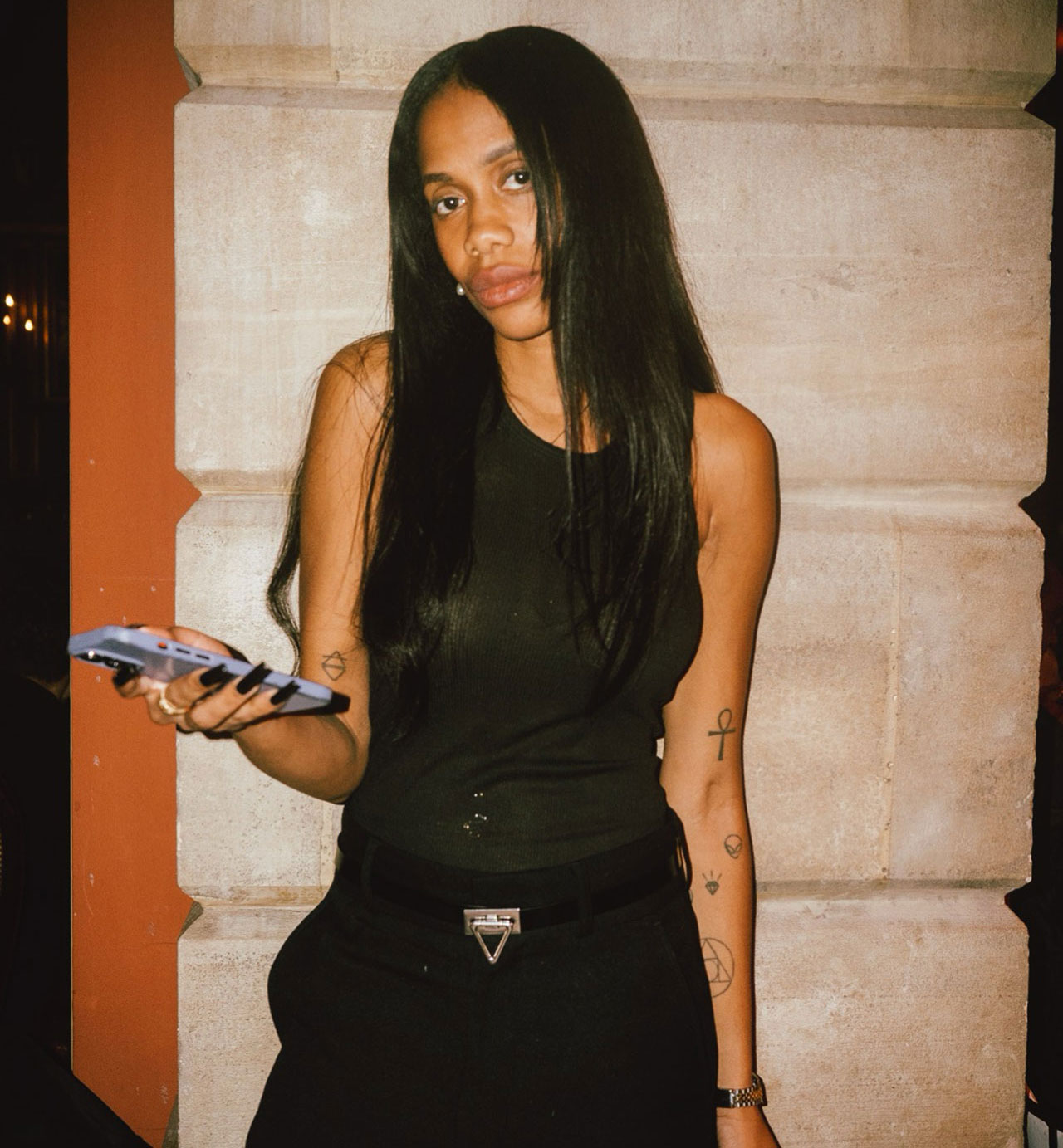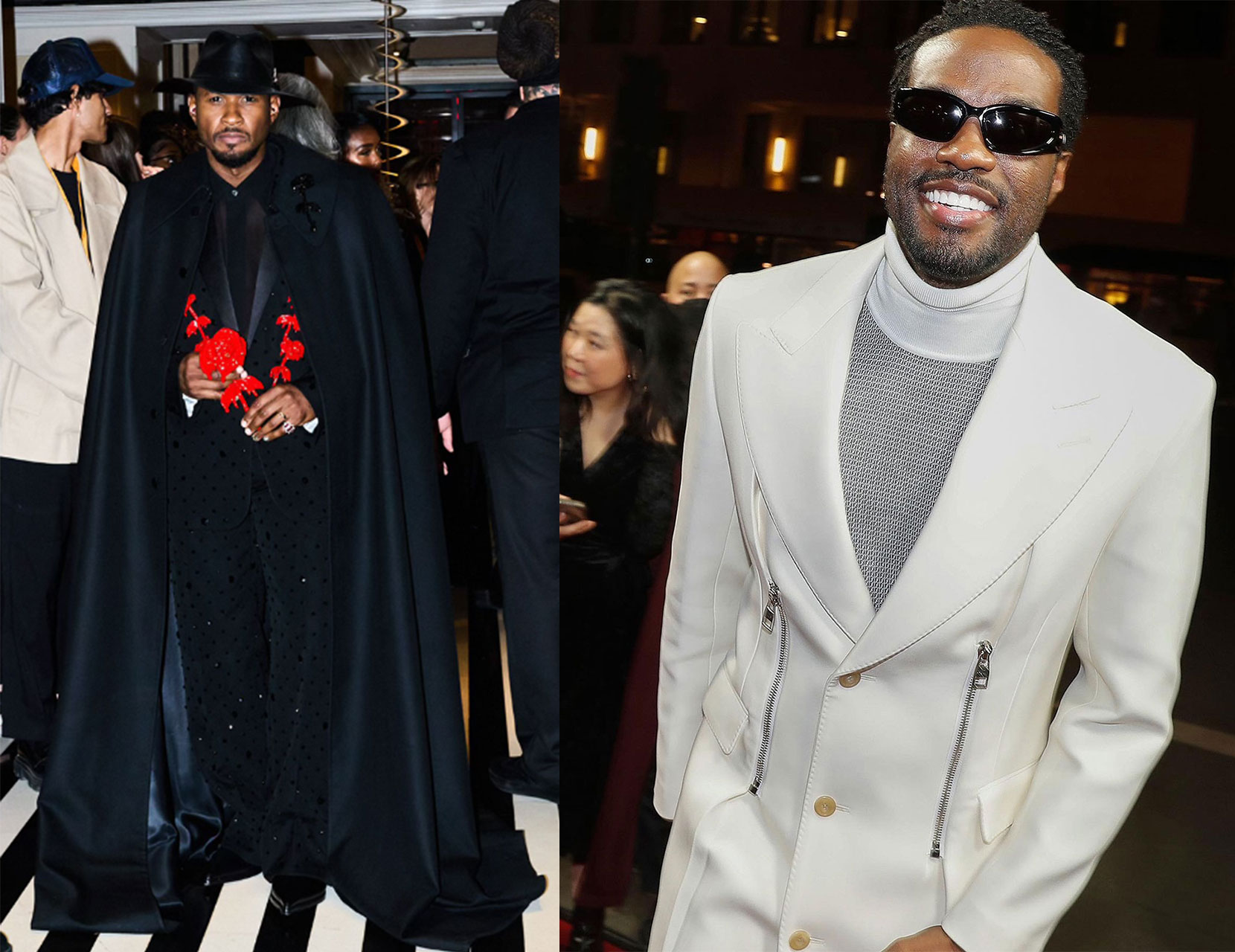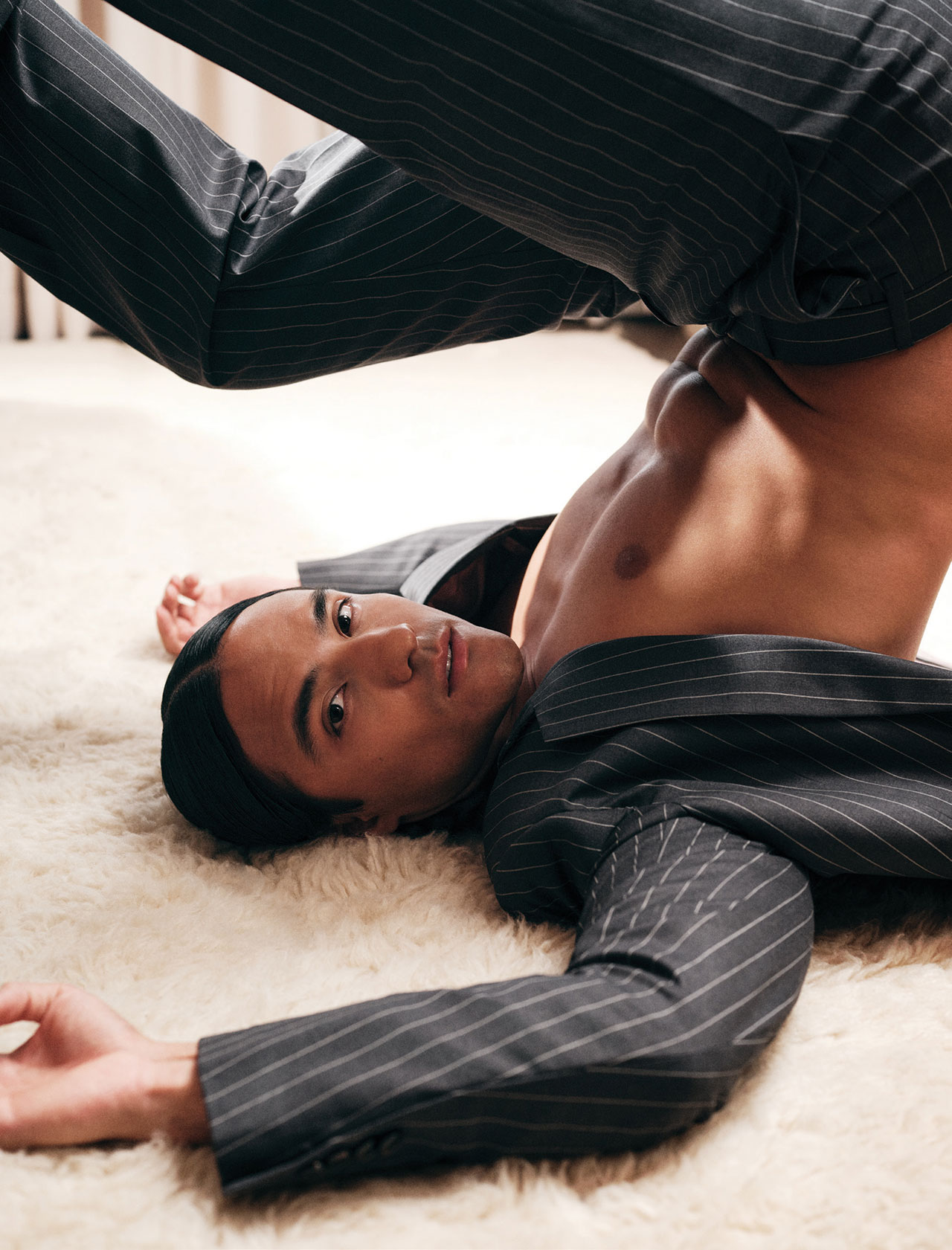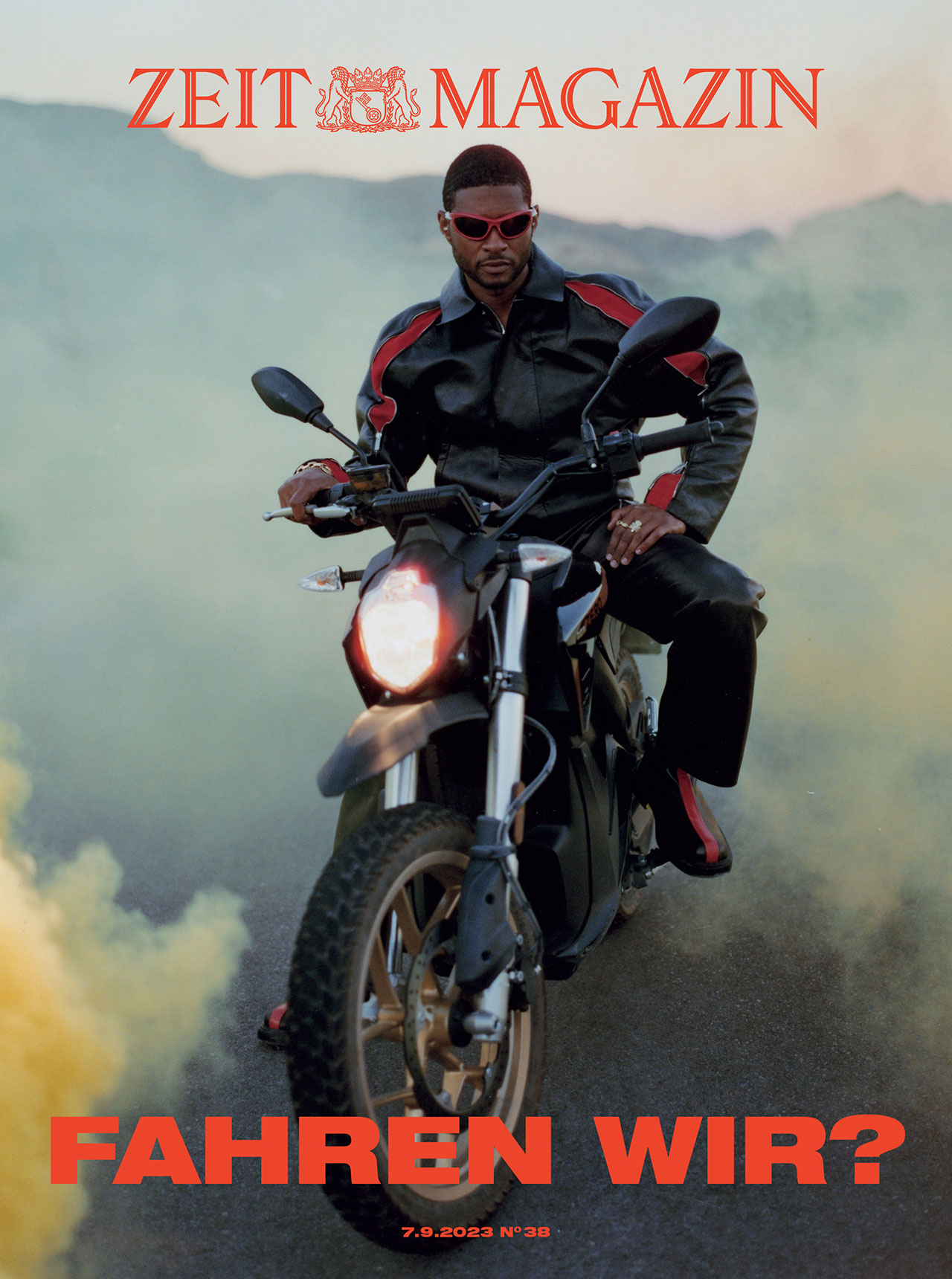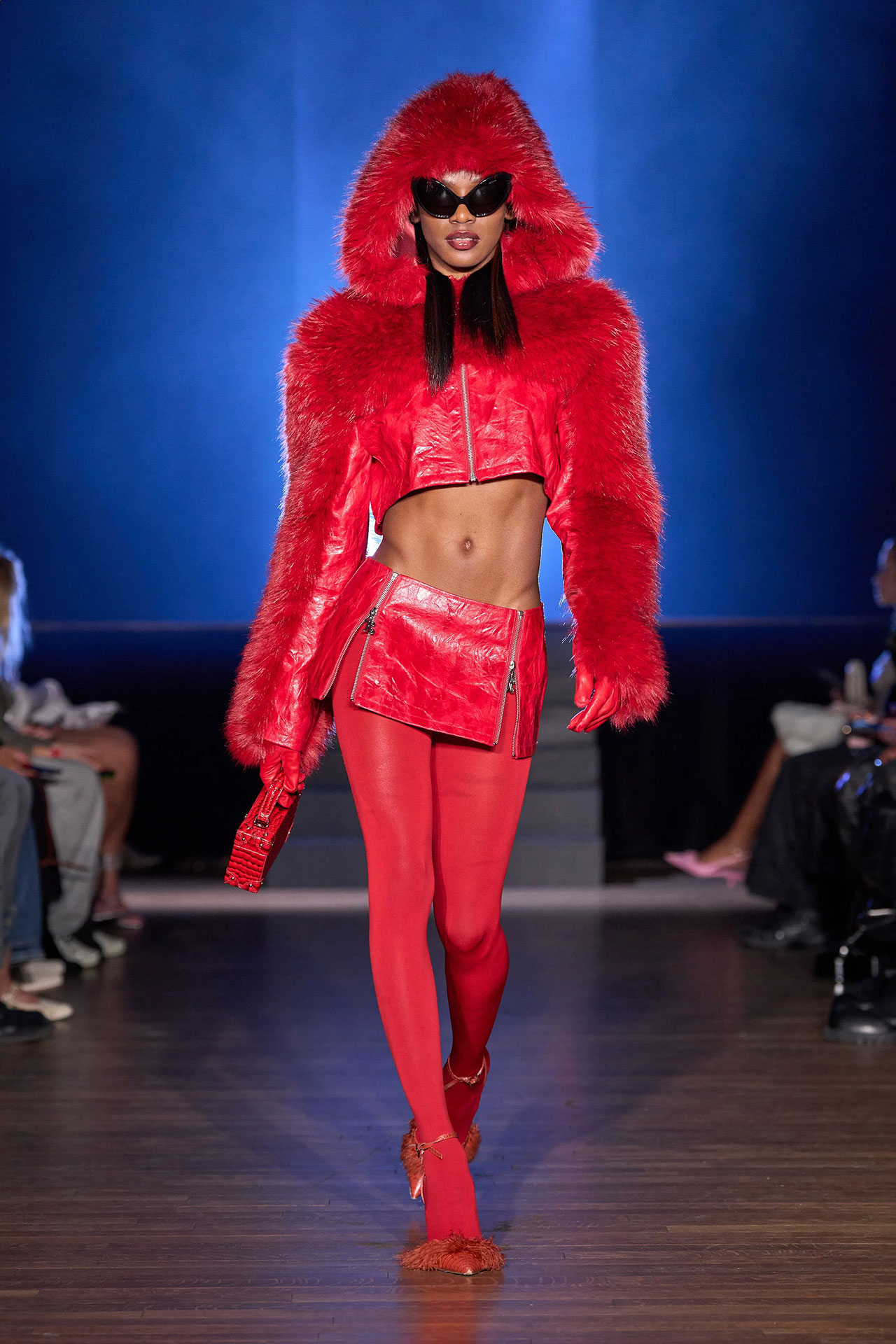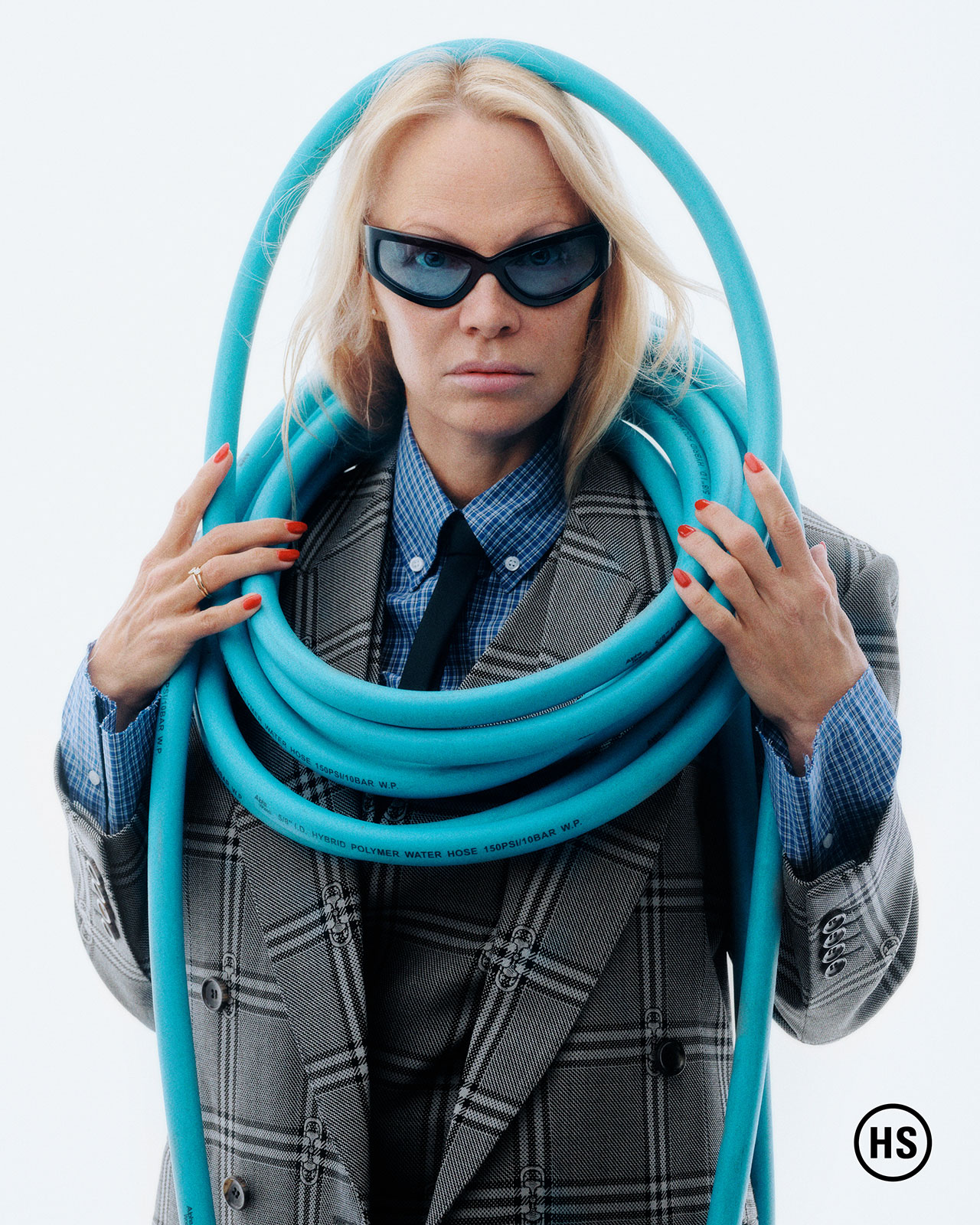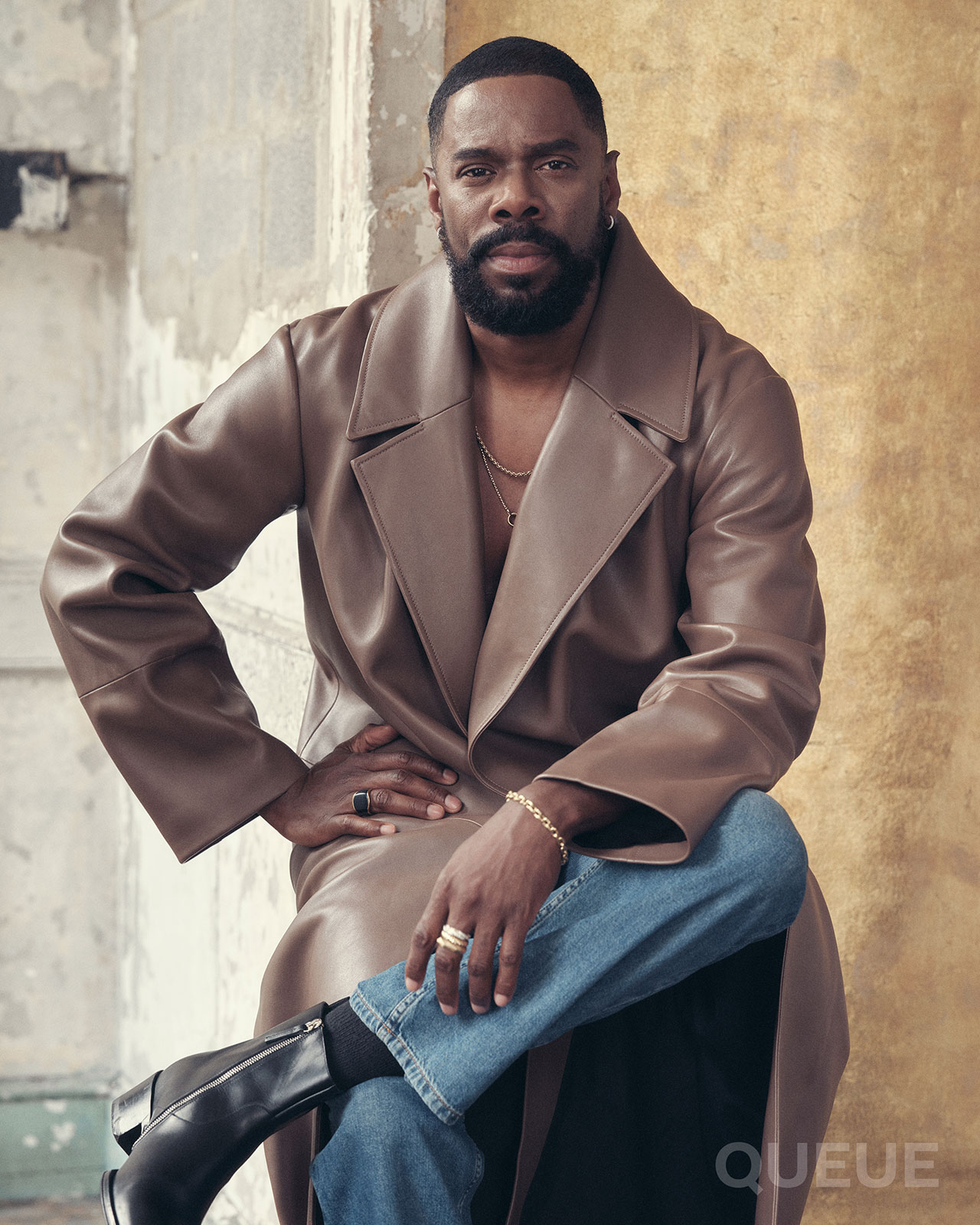Stylist Jan-Michael Quammie, the native New Yorker known for sporting looks from her sartorial favorites like Rick Owens, Thom Browne, or Junya Watanabe, has always felt a connection towards fashion since childhood. Growing up in Brooklyn, she carefully planned her outfits for school, drawing inspiration from her environment – whether it was watching her older brothers get ready, the theater scene, or the epic people-watching that only New York City can provide. Her curiosity for the industry led her to submit an application to the Fashion Industries High School and although her family’s move to a different neighborhood prevented her from attending, the setback only fueled her determination. She got the needed exposure to the fashion world through an uncle who was a buyer at Bloomingdale’s and had his own boutique. Helping him ignited her interest in buying, which eventually landed her a job at Saks and moving up the corporate ladder. Reflecting on her career, she recalls the moment she knew she had to take a leap to stand out from the rest, “I needed to get out of New York because I felt it was very saturated, and I wanted something different. Moving was a pivotal moment for me personally and professionally. It opened me up to the world.”
Her desire for change led her to China, where she started off as an international buyer for a local multi-brand store and later for Net-A-Porter as the luxury retailer’s buying director before heading to Europe. Once again starting afresh, she learned German and transitioned from the buying side of industry as style director at mytheresa to editorial as fashion director of InStyle Germany and eventually Highsnobiety as its first-ever style director. As as she levelled up, each international move refined her personal style further, with Berlin standing out as a favorite, connecting with the city’s “Old New York” creative, club kid energy. Now as a full-time stylist and wardrobe consultant, Quammie has worked with some of Hollywood’s biggest names, like Usher, Gwen Stefani, Russell Wilson, Colman Domingo, Pamela Anderson, and Yahya Abdul-Mateen II. Models.com caught up with Quammie to discuss the importance of living in different cities, discovering the dualities of her clients’ style, and her advice to up-and-coming creatives.
Growing up in Brooklyn, what were your first memories of fashion?
My first memories of fashion began around four or five years old, and it was very personal. I remember always feeling a bit anxious about what I was going to wear to preschool. So, I would mentally dress myself before waking up, having it all sorted out by the time I needed to get dressed. I think that was one of my earliest memories—knowing that I was interested in clothes and coordinating outfits in my mind first. Growing up in Brooklyn, fashion was always around; it was part of the culture. I have older brothers, and I would watch them get ready for dates or basketball practice and hang out with their friends. Music videos, movies, the train, parks, and going to the theater a lot as a kid also influenced me. My uncle was a buyer at Bloomingdale’s and had his own boutique. I used to help him buy for his boutique, which is how I got into buying. Before I understood what he was doing, I thought, “Oh, I’m going to be a model,” because I believed that was the only way into the fashion world. However, modeling didn’t suit my personality since I love being behind the camera. I tried it, but I was too shy, so it never worked out.
Did you go to a specific fashion school to learn styling, or is it something that happened gradually as well?
I didn’t actually go to fashion school. I applied to Fashion Industries High School during middle school. I had to send them a 10-page portfolio of fashion designs, which they had to accept before inviting me for an in-person test. During the test, I had to draw and sketch a bowl of fruit. In the end, I was accepted and offered a place for ninth grade, but my parents moved deeper into a residential area of Brooklyn, so I never actually started at Fashion Industries. It was intense, but it was great for my ego and self-esteem because I didn’t think I would get in. I remember all the girls in my sketches were influenced by Aaliyah—they all had swoops and motocross fits. The name of my design was Charisma. I didn’t think that moving further away from the city would be an issue for my parents, but it became one. So, I had to go to a high school in the area we moved to. My parents only wanted to support something in the health or medical field because they were both medical field workers. I really wanted to go to school for fashion and art, but they were not going to pay for that. So, I applied for a respiratory therapy program at the college I was going to and got accepted, but I hated it. I transferred all of my credits to psychology because I knew I couldn’t continue with respiratory therapy, and my parents were okay with that. But the entire time I was in school, I was already working in fashion. I started in assistant buying, then moved to Saks, and was just going to school for a degree at that point.
Would you say that Aaliyah is one of your style inspirations today as well?
I mean, she’s definitely always a reference. Inspiration? Not really. I think she inspired a lot of how I looked at things growing up, but I won’t call her inspiration. She’s always a reference, but she’s just someone that I love.
I know you mentioned that you started buying while you were in school. Throughout your career, you’ve taken on many roles—from buying to editor and now, of course, a stylist. How have these diverse experiences informed your transition into a more creative role? In what ways has your business background influenced your approach to styling?
The only significant transitional moment for me in my career trajectory was when I went from buying to fashion director. I realized that this role was both creative and analytical. By then, I already had an analytical approach to breaking down fashion in terms of breakthroughs, sell-throughs, return on investment, retail math, margins, and more. When working with advertising clients and deciding what to shoot, I would ask questions like, “Is there a piece that you’re having issues selling out or has a low sellout rate?” I didn’t want to feature looks that were already sold out or had high potential to sell out because by the time they appeared on the cover and customers started inquiring about them, they would already be sold out. That wouldn’t work. Instead, I suggested looking for items with a lower sell-through rate so they would likely be available when customers wanted them. This approach worked well with retailers and brands, as they were grateful that I would feature items on the cover that were available and had stock. It was important to me to use my buying expertise and apply it to publications and editorials, taking a comprehensive 360 approach rather than focusing solely on fashion. When it comes to styling, I approach it with a business mindset, though I don’t think my corporate background has significantly informed my styling. It was more about the transition from buying to working with magazines. Even though I’m styling now, I still consider myself an editor because I edit. I don’t solely see myself as a stylist since I am also involved in editing with all the magazines I work with.
What were the main changes and challenges you faced when you took that risk during the transitional face you were in?
There weren’t many challenges. I think the one thing that gave me a bit of anxiety was stepping into roles where I had to be my own manager, especially roles that lacked structure or a concrete schedule. I was used to working in corporate roles within larger companies, where I enjoyed cushy positions with benefits like income stability, health insurance, and 401(k) investing. I avoided working for myself for a long time because I wasn’t sure if I could handle everything on my own. However, once I tapped into my business mindset and asked myself, “What do you do well?” I realized that I organize well and have a natural sense of structure. I applied these skills to manage housekeeping, taxes, invoices, expenses, accounting, and all those tasks. I also got an agent, which was very helpful because it was overwhelming to do everything myself. This allowed me to focus on my job and the creative elements.
You recently styled the ELLE USA June/July 2024 issue, Hollywood Rising. Considering that you styled multiple actors, how was the process of pulling all of those looks together?
It can be intense if you make it so, but you just have to be super organized, with lots of spreadsheets and presentations, organizing each talent to the T. Working with the Elle team, who are also very organized, helped align our preparations. For me, even though I didn’t know every single actor, it was a bit different from when I did the music portfolio, where I knew all the girls. For the actors, a few I knew well because I’m a film whore, but those actors ended up being replaced by others I wasn’t familiar with. I did my research on them, and they were all major in their own way, and I was like, “Okay, that’s exciting.” There were Disney girls, DC guys, and theater kids, which I appreciated. I looked at their day-to-day activities and personal styles, sometimes leaning into that or choosing to do something very different. I had parameters for the designers I needed to work with, which were all great designers I had worked with before. My support system was awesome; my assistants, who know how I work, helped a lot. It was about coordinating with each talent on a schedule, ensuring hair, glam, and nails were all aligned. It was a long couple of days, with six actors per day. The actors were awesome—open and willing to try anything. Brandon Perea, who had never done an editorial shoot before, was one of the coolest because he was a breakdancer and stunt guy, so he knew his angles and body well. Working with Sharif Hamza, who is amazing and a living legend, was great. We work well together, and he knows everything down to the T, like his lighting, etc. He trusts me, but it’s an anomaly sometimes because occasionally, he’ll look at something on a particular person and say, “No.” I usually don’t allow that, but with him, I do because he knows me very well. If it happens once out of four shoots, I allow it because I trust him too.
Usher has had some major looks recently that you’ve styled for The Met Gala, magazine covers, Paris Fashion Week, and red carpets. When did you and Usher first start working together, and how would you describe your collaboration process?
We started working together in 2022. Our process is built on trust and a lot of respect. If you ever met Usher or observed our working, creative space, you would see that he knows himself, the industry, the brands — everything. When you enter the space, you have to be prepared and come correct because he is incredibly knowledgeable. You can’t just say, “Oh, I think you should be wearing this.” You have to present a whole proposition, explaining the inspiration behind it and where you see it going. It’s a comprehensive process with him, and I appreciate that he challenges me in this way. In my usual work environment, I’ve reached a point where no one questions me because they trust my expertise. We all have our roles, and no one questions mine. Initially, when Usher questioned me, it threw me off. Now, I know that if I don’t want to be questioned, I need to be thoroughly prepared. Our system is truly collaborative, and we also freestyle. I’ve learned not to be too attached to any idea because things might change, and I had to get used to these nuances, being open to change on the spot. It’s all very whimsical, and we dream. That’s how we reach the end result—because we work differently. He is so open and not afraid of anything. He scares me more than I scare him; he’s a true artist.
Do you have a favorite look from working with Usher?
My favorite? Probably the Zeit Magazine cover. When I work, I approach things from a 360-degree perspective. I don’t only handle fashion; many of the props on set are my ideas because I already know what the looks will be like, and I need certain props to complete them. For example, I first got the Balenciaga motocross look for the shoot, which I later realized was an Aaliyah reference. It reminded me of Aaliyah in the “One in a Million” video when she came in on bikes. After getting the motocross look, I told myself, “I need a bike.” I thought about this a couple of days before the shoot, and production sourced the bike. Although it wasn’t the exact bike I wanted, out of the five available, I chose one, and we made it work. I also got Usher’s old Cadillac for the shoot. So, that Balenciaga look is my favorite. Recently, another favorite was a Mugler runway look for one of the most recent Met Gala after-parties.It was this beautiful bordeaux velvet suit. It’s made so well, the sphinx face, the big shoulders, the shape, the silhouette, it was so fly. We matched it with Saint Laurent boots—very pointy, sexy man boots—creating a monochromatic moment, which I love.
Speaking about more of the other clients that you’ve worked with in the menswear space and entertainment space, like Yahya Abdul-Mateen II, Colman Domingo, and Zayn Malik. What would you say is the most important factor when styling men? What’s your personalized approach to styling clients?
I like to talk to them first; I want to know what their personality is. One of my first questions is, “What do you want to look like? Who do you want to be?” Because what we do is theater as well. You can absolutely morph, transcend, and transition into something or someone different from your day-to-day self—we can actually play. I approach styling with the mindset that, “This is a piece you won’t wear on the street day-to-day, but it’s perfect for a cover or an editorial.” I believe there are two sides to people or more, and I love exploring that duality. I try to figure out what their duality is. For example, when I met Zayn, he dressed pretty low-key. It was important to understand how far he was willing to take his look. On the other hand, someone like Yahya is down to play as long as it doesn’t overshadow him. He never wants the clothes to wear him. It’s about finding out what their thing is. Colman Domingo, an artist in every sense of the word, is willing to do whatever it takes, even wearing a little eyeliner, to bring the look home. But not everyone is like that. So, it’s about finding out their limits and how far they are willing to go. It’s about reading the room and understanding their comfort zone.
“That’s what it’s about: “Am I able to have an emotional experience when all of this is said and done at the end?”
You were the key stylist for the Kim Shui F/W 24 show. How was the energy backstage, and how was the process of working with Kim for the first time?
It was our first meeting, which was also our first fitting. When I do shows, I can walk into a collection that’s not complete, or I can see all the pieces under wraps. So I didn’t really know what to expect. I asked, “How do you want to work?” and it turned out to be very collaborative. I was able to sketch some pieces, merchandise the collection from top to bottom, and design styling elements. She quickly made items like those big faux fur trapper hats and many other pieces we created for the show. It was the first time she did something like that. There was a lot of co-designing involved with styling that show because it was necessary to really build it out. She started with looks that felt a bit unconventional for her, based on her previous collections, which I liked because I wanted it to feel different if we were going to do this together. It was a challenge doing something new while maintaining the balance of who Kim Shui is and keeping it on brand. Casting is really important to me because I can see a look and know what type of model it should go on. I wanted to be involved with casting, and we got some great models. Backstage, it was lots of high energy and excitement. Once it started, it was “Go time.” I had my daughter and her best friend helping get the girls ready, and my son was backstage as well. I bring my kids to work with me when I can. I remember when the models were doing the final lineup; usually, at that point, I get a little emotional because it takes weeks of prep, and now we’re here. Watching the models on a monitor, looking like powerful, badass women with their superstar walks, I got choked up. That’s what it’s about: “Am I able to have an emotional experience when all of this is said and done at the end?” And I did. It was really great working with Kim Shui.
Who is your ultimate style inspiration, and where do you seek creative inspiration? Apart from styling, what else are you passionate about?
I’m actually the type of person who doesn’t like to look too far or too much for inspiration, which is strange. I get a lot of my inspiration and references from films, theater, and old films that I remember as a kid. It’s all very nostalgic for me. My friends always laugh and say that I’m an aesthetics girl, and it’s true. For example, when my friends looked at my work with Kim Shui, they said, “Everyone looked like you.” I never know if that should be a compliment, but I think it just means that I have a point of view. I love it when other artists have a distinct point of view, and you can recognize their work from a mile away. To me, that’s the most important thing. I don’t try to do it; it’s just what I resonate with and what I gravitate to. I get references from films. I’ll be watching something, and then I’ll make some notes, look into it more, and revisit it. I also like to go to galleries when I’m dead inside. I’m usually always dead inside, I’m a jaded person who hates everything.
So, you’re a true New Yorker then.
Yep, it’s crazy, and I think that’s probably why I left so early. I went to China, and then I went to Germany, specifically Berlin, and it made a lot of things make sense for me style-wise. That’s more my vibe. Going back to inspiration, Arthur Jafa’s work has been significant for me. I went to his exhibition that closed on June 1st, and I love him. I don’t know why, but I get a lot of inspiration whenever I hear him speak. He doesn’t even have to be showing anything; he could just be doing a lecture, and I get inspired. I love Viviane Sassen’s talk about color, movement, and silhouette. I also like to go to the Brooklyn Botanical Garden to look at colors. It was one of my first jobs from when I was 12 to 15, so I’m very connected to it. My inspiration is random and not tied to a specific person.
You mentioned how Berlin played a huge role in your life and your aesthetics as well. How did moving from New York to China and Germany play a pivotal role in your life?
When I moved to China, I was a very different person than I am now, style-wise. At that time, I was still in my buying phase, wearing a lot of Chanel and Manolo Blahniks. I still dress like that sometimes, whether it’s chic or raver and vampy. However, I needed to get out of New York because I felt it was very saturated, and I wanted something different. Moving was a pivotal moment for me personally and professionally. It opened me up to the world. As a New Yorker, historically we’ve been known to not get out of New York enough because we’re very arrogant. “Why get out of New York? Everyone’s coming here. Why would I move?” and those things are true. But I recommend that everyone live somewhere else at least once for at least a year. It broadens your awareness of people, their lifestyles, and the differences between us. It makes you kinder, more compassionate, and more empathetic—qualities I lacked before I left. This experience helped me become a better person and, in turn, improved my work. I became addicted to living overseas. I moved to Munich, Germany, which was a culture shock, but I found my groove through work. I’ve always been ambitious and persistent. I was there for five years, but many people don’t know that I moved to Munich for love, not work. I assumed I would get a buying job quickly since I had been the buying director of Net-A-Porter but it didn’t happen. I started from the bottom again and built myself back up. I worked for a retailer, buying and selling. Eventually, I met the buying director of mytheresa and became their style director. It took a couple of years because I didn’t speak German initially. So, I learned German and later got a call to be the fashion director of InStyle Germany, both men’s and women’s. Starting over in Germany humbled me. Later, David Fischer, the owner of Highsnobiety and a friend, called me and said, “I think it’s time to come to Berlin.” I moved there as the magazine’s first-ever style director, which was really important for me as well because it opened me up in other ways. Berlin’s energy reminds me of old New York, a New York that I didn’t exist in. The club culture is unmatched—dystopian and fierce. Nowadays, everyone looks like they’re emerging from some sort of hellhole, but in the coolest way. Style-wise, it’s my favorite aesthetic.
What is your favorite aspect of your work? Do you enjoy the research phase or being on set more?
Honestly, I think it’s 50/50. The prep speaks to my introverted self, and being on set speaks to my extroverted self. I enjoy working in solitude and prepping everything from top to bottom. The best part of all that is when the confirmations start coming in—it really boosts your dopamine and confidence. For me, I can’t have one without the other, and I can’t enjoy one without the other.
You work quite closely with the Thom Browne creative team on looks for your clients and yourself. How did you first connect with the brand, and what about them keeps you coming back?
One of my favorite characters to play with is “School Girl.” I mentioned earlier that when I started going to school, I would plan outfits in my head. It was a Catholic school, and we wore uniforms. I really liked my uniform, but I also enjoyed wearing it my way. I used to wear jeans under my skirt, which my parents and teachers hated, but I would sneak it in and do it anyway. I’ve always had a connection to kilts, pleated skirts, tartan, and plaid. Thom Browne does that aesthetic the best—the fit and quality are just fantastic. I used to buy Thom Browne when I was at Net-a-Porter, and I used to sell it at Mytheresa because we carried it on our e-commerce website. I’ve always loved it, and now that I’m working in editorials, I pull it as much as I can because I just need it in my face. What really kicked it off was having a personal relationship with them. I started working with them directly a few years ago with Yahya, and that’s how we got close. Yahya likes to look like an intellectual, and I enjoy dressing him that way. Whenever we did things together, we would pop out in Thom Browne. It wasn’t even about the brand; we just aligned on wanting to wear it. Thom Browne has this cool way of making friends and family of the brand feel special. Thom himself is amazing and very personable; he comes down from his office to say hello. He doesn’t have to do that, but he does. It’s a very intimate relationship, and whenever I can support them, even if they’re not involved, I try to.
What advice would you give an up-and-coming fashion stylist?
Do something that helps people and changes the world. Be a teacher. I’m much more impressed by people who work with kids or save lives, like heart surgeons. Even lawyers or teachers, especially teachers—they don’t get enough credit. Any type of medical worker impresses me. My parents are hypochondriac retired medical workers, so I understand. I’m much more impressed when people talk about those careers. I am now trying to figure out how to transition, so I feel like I’m paying it forward. I try to speak at events and panels because I think that’s the way to make all of this nonsense make sense. I’m trying to find ways to transition my career into something more meaningful.
